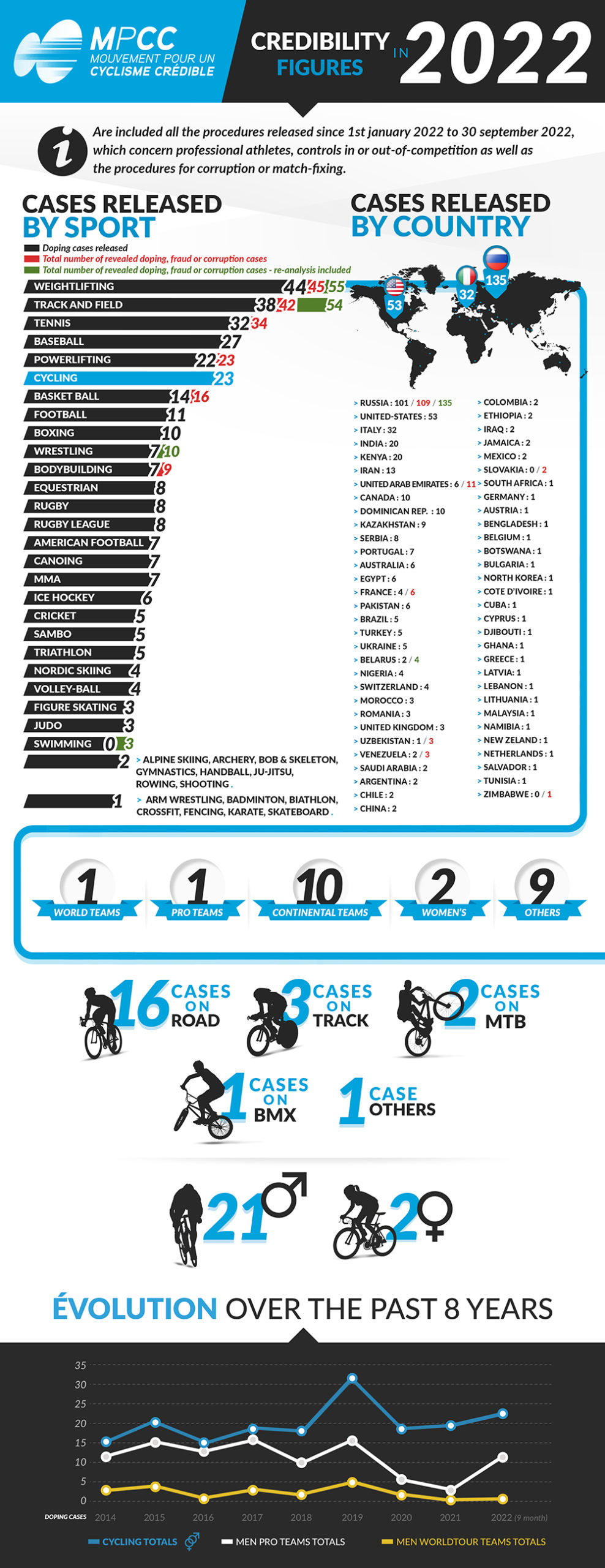19 procedures concerning various cycling disciplines were revealed this summer, compared to only four cases in the first five months of the year. Here are some explanations.
The figure may come as a surprise. Actually, only one case has attracted a lot of media attention, the one involving Nairo Quintana (Arkéa-Samsic). Even if, in the strict sense of the term, the facts do not constitute a case of doping, the Colombian rider was found guilty by the UCI of using a prohibited product.
This use was contested by the rider concerned on Wednesday 12 October in Lausanne before the Court of Arbitration for Sport, which has postponed its decision. Should the CAS confirm the positive test of the Colombian rider, it will be the very first sanction applied by the UCI for the use of Tramadol (Quintana was disqualified from his 6th place in the last Tour de France). This substance, which was banned in 2019 by the UCI, has been banned for even longer by the MPCC (of which the Arkéa-Samsic team has been a member since its creation).
As early as 2012, our movement had banned Tramadol among its member teams. It is now accepted by all authorities that this level 2 painkiller causes dizziness affecting the riders’ vigilance during the race and their safety. According to our team doctors, this powerful drug also distorts the perception of pain, thus improves performance, and ultimately affects the athlete’s health. Ten years after our request to add Tramadol on the list of banned products, WADA has decided to ban it as of January 1st… 2024!
The Quintana case cannot lead us to ignore the other fifteen procedures. However, it should be noted that they are scattered over practically all cycling disciplines (road, track, cyclo-cross, BMX, MTB and even MTB-Trial). Three of them were initiated against riders who had failed to notify their whereabouts on the ADAMS software three times in less than a year.
Portugal and Italy, facing its demons
This summer once again demonstrated that judicial investigations are more effective than the fight against doping in bringing down organised networks. A telling example was provided in Portugal with the “Prova Limpa” operation, which led to the arrest and suspension of a dozen riders and staff members in July, all from the continental team W52 – FC Porto. In recent years, the MPCC has repeatedly stressed the need for vigilance against the threat of organised doping within teams. In the case of this team, seven riders (more than half of the squad) have so far been sanctioned by the Portuguese Anti-Doping Agency (ADOP) and the team as a whole had its licence withdrawn by the UCI just days before the start of the Tour of Portugal.
Also in Italy, the fight against doping is still very intense, with alarming results. Looking only at high-level or professional athletes, there have already been 32 procedures this year (all sports combined).
Concerning Italian cyclists, it should be noted that the Italian anti-doping agency (NADO) has also suspended a dozen amateur cyclists, most of them for using heavy doping products (EPO in particular). Surprisingly, this is not the case for the two Italian professional cyclists on our graph. Vincenzo Russo (Qhubeka) allegedly evaded a doping control. His compatriot Michele Gazzoli (Astana Qazaqstan) was also suspended, admitting to using “a drug called Rhinofluimucil (a nasal spray for the treatment of rhinitis)”. Although the UCI said that this was an unintentional anti-doping rule violation, the rider was dismissed by the Kazakh team.
Two years had passed since a rider had been suspended from a World Tour team.

Last update: 10/19/2022
